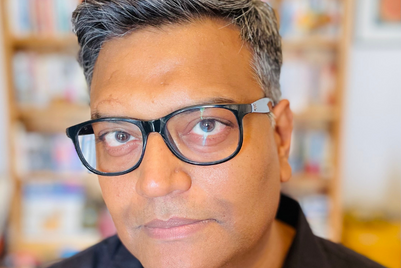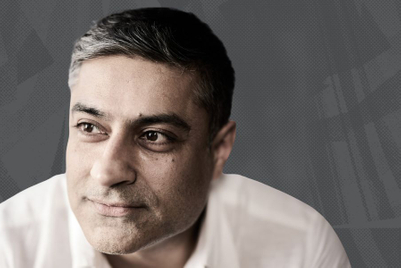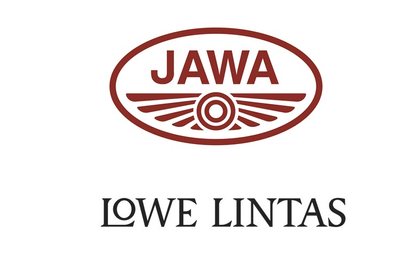It’s been about three months since Shayondeep Pal was elevated to his current position of executive creative director for Lowe Lintas’ Delhi office, and he’s enjoying it thoroughly.
The expression, ‘With great power comes great responsibility’ holds true for him as he heads a team of 32, he observes: “I was earlier handling four brands. Now, it’s the entire offering. So responsibilities have changed massively. But, it’s good fun at the same time. Arun (Iyer) is on board (who was also elevated as CCO of the agency); he has a different style of functioning, which is quite exciting. You still feel that you don’t want to go office on a particular day, but you can’t do that because of the volume of work.”
His mandate at the agency also includes attracting the right kind of talent. And this is a pain point according to Pal. He explains, “The goal was to attract the right kind of talent. Once that’s in place, work standards and quality goes up automatically. And you can only attract talent when you start doing good work. Good work is recognised when the non-advertising fraternity appreciates it. When you meet someone and tell them you’re from advertising, and they compliment it (your work), it seems good. We’re in a superficial world, so when someone from outside says good stuff, it’s a good thing.”
On the pain point of attracting talent, he adds, “It’s difficult to find good people right now. It’s a struggle in fact. I have been looking for a CD in Delhi for two months, and I haven’t found one. It’s not only because of money. In fact, I think they get promoted very soon and get their money. But, their body of work is very average. It’s quite bad in Delhi actually. There are very few people in Delhi you can actually count on when it comes to do doing justice to their designation.”
He attributes the talent crunch to the way agencies are working. “I don’t think advertising is a profitable business currently. Agencies need to do something drastically different. There are agencies willing to work on retainers of three to four lakhs. This affects the whole ecosystem. The price of an idea is dipping. Clients should be paying more. This gets reflected in the salaries, and makes us start missing out on creatives.”
One solution for this according to Pal is a grading system, like the one the BCCI has set in place for the Indian cricketers. He explains, “We need something like that. The top five agencies should command a premium. When a client goes to say a Lowe, Ogilvy, DDB Mudra or a Leo Burnett they should have to pay more. The top guys – the decision making guys of the agencies should sit together and figure this out. It should be an annual thing. If you slip to sixth, you probably have to command something lesser. Top five agencies should be allowed to charge a premium. Else, we are just losing the plot in my opinion.”
Situations like this may make Pal think of other avenues, he admits. He notes, “I would like to direct, I’ve directed films earlier, but right now it’s an open thing.”
The beginning
The ECD began his career in the late ‘90s as an intern at McCann. He recounts, “I was pursuing English journalism with advertising as a subject. I found it interesting and thought I should join advertising. Also, the immature-ish thought of getting away with writing three words as a copywriter versue 500 words as journalist may have been on my mind. After the course ended, when it came to internships, I requested my professor to let me join an agency instead of a newspaper. After around a month as an intern I was asked to join as a trainee. I got a salary of Rs 3,500 – which was quite cool and exciting at the time.”
While the thought of joining an agency and being paid was interesting, Pal believes that his first six months were extremely difficult. He says, “I thought I’ll join and get to work straight on campaigns – I was actually reading the label packaging for Nestum. I knew more than mothers about this.”
In his four-year stint with the agency he worked on Nescafe, General Motors and Gillette.
About his time at the agency, he adds, “Because I was the junior-most guy at the agency, nothing substantial happened. McCann was also going through a phase, in the pre-Prasoon days. I used to do some print ads and brochures of the ‘Buy one, get one free’ variety. There’s no one campaign that was ‘wow’ at that time. I wrote lots of brochures for the Opel Astra launch. That’s how I got started.”
This made him make the switch to Grey in 2001 and he was hired by Prathap Suthan. About that stint, he says, “I was hired by Prathap Suthan, who headed Grey Delhi. It was a different place and was smaller thatn McCann. It was a family kind of place versus an agency. I handled Domino’s for the longest time. Shalini Dam was my boss there who worked on the ‘Hungry Kya’ campaign; in fact she came up with that line. We used to sit till 12 or 1 am and write ads. Art was simple – it was like a grid, and people knew the font. Me as a writer would come in with a line, someone would put a font and it was all done. The idea was in the line.”
He calls his last few years of his seven-year stint at Grey quite fruitful. “Priti Nair had just joined and the kind of vibes I got then were really nice. Prathap had left. I did one TVC with Priti – which is one of my favourites. It was done for Halonix; never aired but shared quite a bit on YouTube. It was directed by Prakash Varma. It’s quite an interesting piece of work. We briefly handled Greenlam too. During the last two years at Grey, I got into actually writing TV scripts. At McCann, there was lot of hierarchy. The film briefs never came to us writers. Grey wasn’t like that as it was a smaller team. But the only problem at Grey was that it was still at this very family type of zone. It looked at doing advertising versus stories.”
He got his go at storytelling at Lintas in 2008. He explains, “The approach towards advertising here is very different compared to my stints at McCann and Grey. It’s the best phase of my life in terms of my advertising career. The agency changed my perspective about advertising. It was like waking up to a different kind of place. I thought I was wasting my time prior to this. It helped me get a grasp in advertising and do something worthwhile.”
At the time of joining the agency, he worked on some brands under Maruti. He began with Maruti, then got onto Micromax. "Then OLX happened. We also had Hindustan Times, for which we won a Cannes Lion," he adds.
But, things have changed with the agency losing both Maruti and Micromax, and with his elevation. Pal now handles OLX, Google, Hindustan Times and 10 brands of Pernod Ricard. With the inception of Mullen, Dabur and Havells have shifted to the agency too.
Pal says, “Pernod Ricard is one exciting category to be working on. We also have some local app based kind of clients. But there are no auto brands in (Lowe Lintas) Delhi. We’ve just lost Maruti because of global realignments. It’s a big miss, because any auto brand is a delight to work on. I’ve worked on Alto, Ertiga, Ciaz and the SX4. I quite miss Maruti actually.”
Mullen’s inception
With Mullen coming around, Pal says nothing much has changed in Lowe Lintas’ working. “A few accounts have moved, but that’s about it. Mullen is a new agency. It’s a fresh agency, with some real competent people working there. It’s like a sister concern and some of the brands have shifted to Mullen from Lowe. In Delhi it’s Havells and Dabur. Tata Tea from Bengaluru has also shifted. But other than that there’s no real change. It’s a larger organisational decision that’s been taken. It makes us more competitive. Linen didn’t have the seriousness that Mullen has now. It’s a robust second agency. That approach wasn’t there earlier in my opinion. Mullen gives us that seriousness, which is good,” says the newly appointed ECD.
Clients, expectations
Over the course of his 18-year career, Pal believes clients have become savvier and that their understanding of creative has also improved.
He says, “They’re telling us – ‘Don’t give us ads, give us something that will move people’. People aren’t sitting to watch ads, but if a story moves someone, that should be the idea. You need something that emotionally drives someone. Clients are waking up to stuff like this. I can see this happen. When we were handling Dabur – we saw it. There was a heart-warming change. They wanted us to do something different. It’s an old organisation and in terms of advertising it’s at the stage HUL was 10 years ago. But, I could see that change and it’s an interesting and positive sign. They’re not about only promoting products and features. They’re looking at telling stories too which appeal to the larger audience.”
And long-format helps, explains Pal: “People do remember them. For instance one ad for Zigy.com comes to mind. It had an interesting story about a daughter-in-law and the mother and about a divorce. Such films are interesting. So brand messages aren’t getting lost with complexity of stories.”
He surmises, “Lots of people are riding on the success of films. That’ll change soon. It will become extremely holistic, and even a small little idea will help you succeed. The dependence on films will end and that’ll be an interesting phase. I see that happen in the next two years. I’m not saying that it’s going to move to digital – that’s just a part of it. But consumers need to be engaged in newer ways through newer media.”
(This article first appeared in the 11 December 2015 issue of Campaign India)




.jpg&h=334&w=500&q=100&v=20250320&c=1)
.jpg&h=334&w=500&q=100&v=20250320&c=1)

.jpg&h=334&w=500&q=100&v=20250320&c=1)
.jpg&h=334&w=500&q=100&v=20250320&c=1)

.jpg&h=334&w=500&q=100&v=20250320&c=1)

.jpg&h=334&w=500&q=100&v=20250320&c=1)
.jpg&h=334&w=500&q=100&v=20250320&c=1)





.jpg&h=268&w=401&q=100&v=20250320&c=1)
.jpg&h=268&w=401&q=100&v=20250320&c=1)
.jpg&h=268&w=401&q=100&v=20250320&c=1)
